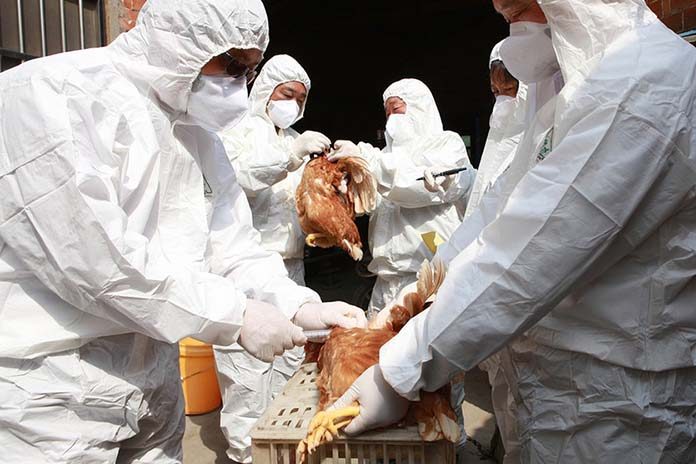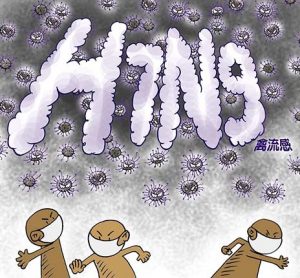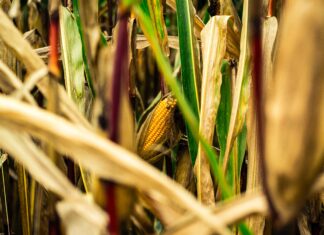
The nationwide H7N9 Avian Influenza vaccination program launched by the Ministry of Agriculture (MoA) of China in September 2017 has had the desired effect, according to a qualitative risk assessment update by FAO, which addresses the Chinese-origin H7N9 spread in poultry and human exposure from January to May 2018.
The risk assessment found however that there is still potential for new avian and human exposures to occur. This was especially the case during the first few months of 2018.
There is also still potential for virus to be introduced to neighboring countries. This means that although the threat has been reduced overall, countries that have trade in live poultry with China (in particular, Viet Nam, Lao PDR and Myanmar) are still at risk and need to maintain vigilance in monitoring for viral incursions.
The risk assessment took into account that vaccination will reduce the prevalence of infection in poultry and, as a consequence, human disease. However, H7N9 will not be eliminated in the short-term and we need to continue reminding all those involved in poultry-keeping, marketing, butchering etc. to maintain their efforts in improving biosecurity practices and personal protection measures. FAO also recommends that veterinary and customs services in neighboring countries remain aware of the potential introduction of infected poultry or contaminated poultry products.
 FAO commends the MoA of China and the poultry industry for implementing the vaccination program as an important measure to safeguard human health and promote safer poultry trade. This had already been recommended in FAO guidance to risk management along the food chain for H7N9 Avian Influenza issued back in May 2013, soon after H7N9 viruses emerged as an important zoonotic disease in China: ”If the prevalence of H7N9 in poultry is found to be high and widespread, and the virus in poultry cannot be controlled by stamping out and market closures or restructuring, the vaccination of targeted poultry populations/species should be considered, to increase flock resistance to infection, reduce potential virus shedding and, consequently, diminish human exposure to the virus.” The guide suggested China should consider producing a bivalent H5/H7 vaccine and stated that: “The immediate goal of poultry vaccination is to increase immunity and reduce virus shedding, with the aim of reducing the threat to human health”. By achieving very high coverage nationwide with a well-matched vaccine, it is expected that shedding of virus and contamination levels in markets decrease. Findings so far, including the small number of positive samples in markets and few human cases during the current sixth wave (since October 2017) suggest this has occurred.
FAO commends the MoA of China and the poultry industry for implementing the vaccination program as an important measure to safeguard human health and promote safer poultry trade. This had already been recommended in FAO guidance to risk management along the food chain for H7N9 Avian Influenza issued back in May 2013, soon after H7N9 viruses emerged as an important zoonotic disease in China: ”If the prevalence of H7N9 in poultry is found to be high and widespread, and the virus in poultry cannot be controlled by stamping out and market closures or restructuring, the vaccination of targeted poultry populations/species should be considered, to increase flock resistance to infection, reduce potential virus shedding and, consequently, diminish human exposure to the virus.” The guide suggested China should consider producing a bivalent H5/H7 vaccine and stated that: “The immediate goal of poultry vaccination is to increase immunity and reduce virus shedding, with the aim of reducing the threat to human health”. By achieving very high coverage nationwide with a well-matched vaccine, it is expected that shedding of virus and contamination levels in markets decrease. Findings so far, including the small number of positive samples in markets and few human cases during the current sixth wave (since October 2017) suggest this has occurred.
FAO’s qualitative risk assessment update compiled the latest available information on the virus as well as on trade and movement of poultry or their products in the South-east Asian region and beyond. The information was collected from updates by the MoA of China, latest publications as well as by involving experts from the different FAO regional and country offices in Asia, including FAO’s Emergency Center for Transboundary Animal Diseases (ECTAD) China, as well as subject-matter experts like the OIE/FAO Network of Expertise on Animal Influenzas (OFFLU), and partner organizations like the World Health Organization (WHO). Uncertainties for the assessment were generally low. FAO recommends that China continues to ensure high level immunity in vaccinated populations and to monitor for emergence of any antigenic variant H7N9 virus strains that could diminish the effectiveness of vaccination. When these emerge, changes to vaccine antigens should be made. The progressive and orderly shift away from live bird sales towards centralized slaughter should continue, taking into account the livelihoods of traders. Although elimination of this virus may not be possible in the short term, it should still be considered as the long term objective.

















